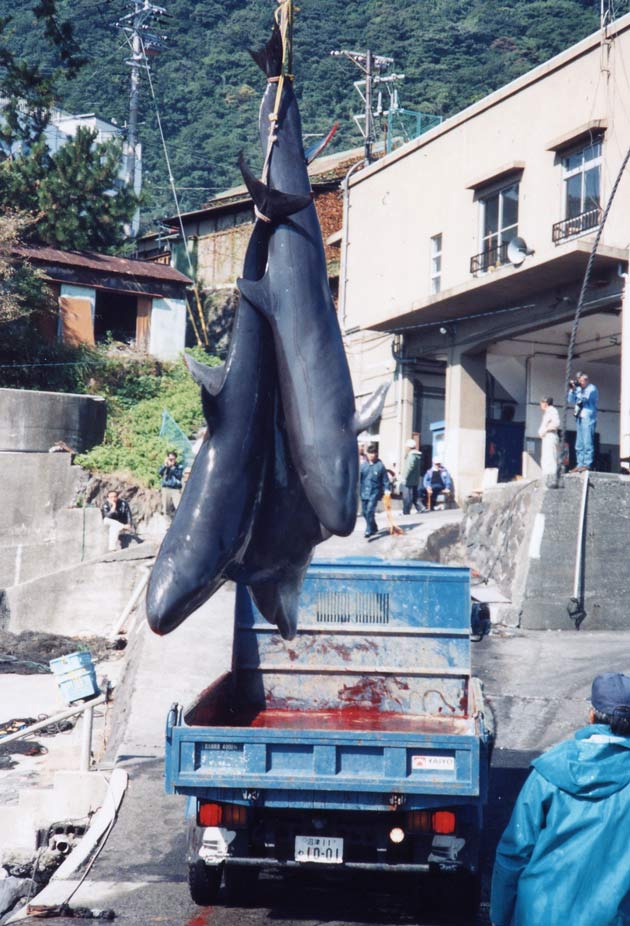Scientists Protest Dolphin Slaughter

Each September a months-long ritual starts up again in the Japanese villages of Taiji and Futo. Fishermen herd hundreds of dolphins into shallow bays by banging on partially submerged rods. Researchers say the dolphins are corralled into nets and then speared, hooked, hoisted by their tails [image], and finally eviscerated alive.
A new consortium of scientists and wildlife officials today called on the Japanese goverment to end the practice.
The “Act for Dolphins” campaign includes members from the New York Aquarium, Emory University, and the World Association of Zoos and Aquariums (WAZA). The group called the annual hunt "inhumane by any ethical standard" and said it "should be discontinued immediately."
“The Japanese dolphin drive hunts are an abominable violation of any standard of animal welfare, and these hunts inflict measurable pain and suffering on animals that are intelligent, sentient, and socially complex,” said Diana Reiss, Senior Research Scientist and Director of the New York Aquarium’s Marine Mammal Research Program.
According to the researchers, the Japanese government claims that the dolphins compete with local fishermen for limited supplies of fish and that the drives are a type of pest control. Act for Dolphins officials say the Japanese government encourages the public to consume more dolphin meat, and it is also used for pet food and fertilizer.
At the group's website, (www.actfordolphins.com) more than 23,000 signatures have been gathered in an effort to convince the Japanese government to end the hunts.
“The Japanese dolphin hunts are an assault on intelligent, sentient, and emotional beings with brains that should make us all stop and think” said Lori Marino, Senior Lecturer in Neuroscience and Behavioral Biology at Emory University.
Sign up for the Live Science daily newsletter now
Get the world’s most fascinating discoveries delivered straight to your inbox.
The hunts kill bottlenose, striped, spotted and Risso's dolphins, as well as false killer whales and short-finned pilot whales. Most of these species are included on the World Conservation Union’s Red List of Threatened Species.
- How Dolphins Spin, and Why
- Marine Mammals Suffer Human Diseases
- Sharks Everywhere: Vote for Your Favorite
- Why Large Creatures Go Extinct










